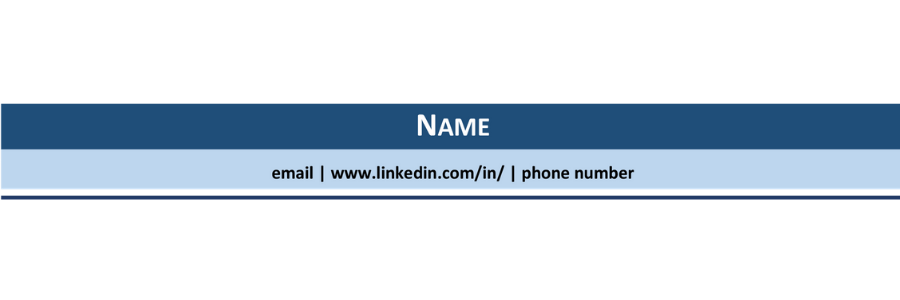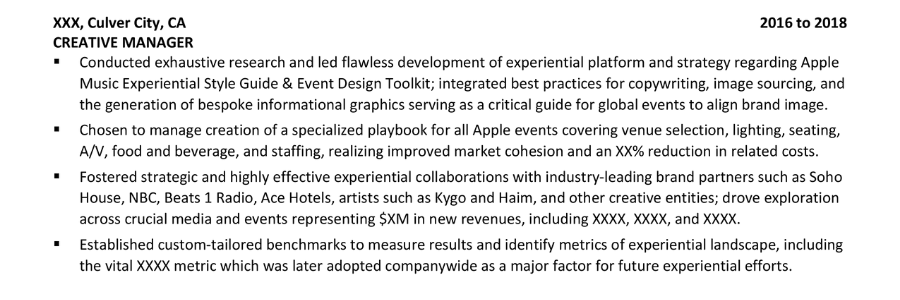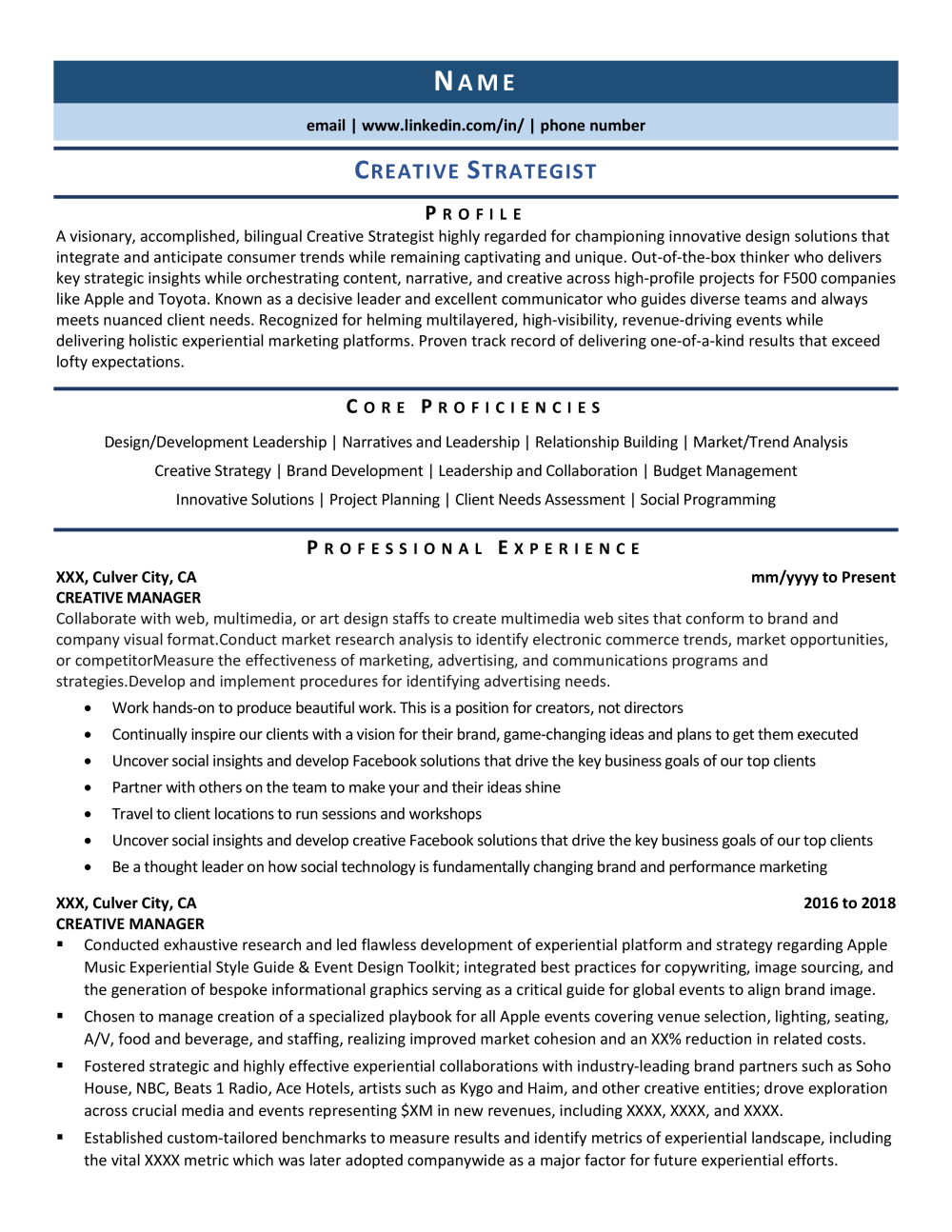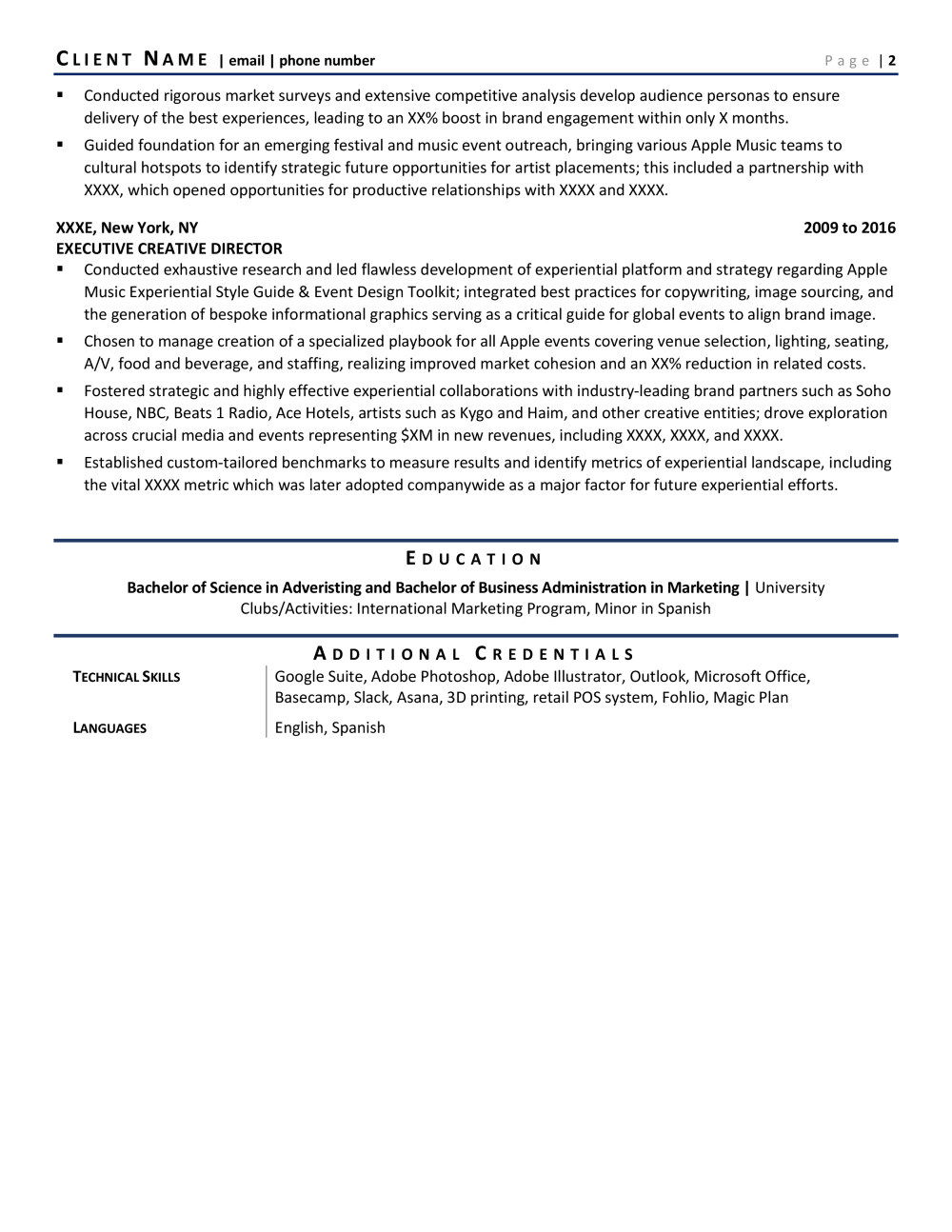How To Write A Chronological Resume (Guide + Example)

11 min read

Job applicants use many different resume formats, but none are more popular than the reverse-chronological resume format. Also referred to as a chronological resume, it starts with the most recent job experience and works backward. Chances are you've seen a few of these in your time and even used one yourself.
In fact, it’s so popular that most people instinctively picture the reverse-chronological resume format when they hear the word “resume.” So, you’ve seen them and maybe used them - but do you know how to write a reverse-chronological resume?
These tips can help you gain more insight into the important process of writing a resume and help you build a chronological resume that facilitates your job search.
Why is the reverse-chronological resume format so popular?
First, it’s important to understand why the reverse-chronological resume format is so popular. Its name comes from the way that it lists your current and previous work history in chronological order.
The reverse chronological listing method showcases your career progression, so it provides the most relevant information to hiring teams at the top. Because it’s the most widely-used resume format, it also provides hiring personnel with an easy-to-read summary of your various jobs and is compatible with the widest possible array of industries and job types while accommodating different experience levels, too.
Another critical factor as to why the reverse-chronological resume format is typically the best choice is that it is easily read by an employer’s applicant tracking system, or ATS. Applicant tracking systems filter resumes for employers by scanning them for key information and relevancy related to the job posting. If you use a format that the ATS can’t easily read, it will likely mean your resume won’t land in the hands of a human reader, even if you’re qualified.
Who should use the reverse-chronological resume format?
In most instances, you should list your work experience reverse-chronologically: start with your most recent experience and order the remaining experience from newest to oldest.
One exception to this is if you have a nonlinear professional history. In that case, it might be best to use a hybrid or functional resume format instead. A functional resume focuses on your job functions and key skills and minimizes your work history to titles and dates. A hybrid resume combines aspects of a functional and reverse-chronological resume. These should be a last resort but are sometimes a good option for those with significant employment gaps or little relevant experience.
How to write a reverse-chronological resume
There are five areas of focus to consider for the reverse-chronological resume format: contact information, summary, work experience, education, and supporting details. This post organizes them by the questions each section needs to answer.
1. How should hiring managers contact you?
Your chronological resume needs to start with the right information about you: your contact details. It’s vital that employers know how to reach you. Be sure to include all these details right at the top of your resume:
Your name
Your email
Your phone number
Your LinkedIn URL (optional)
If a hiring manager needs to hunt for your contact information, there’s a good chance you won't be contacted. Always include your full name, phone, and professional email address at the very top of your resume.
It’s also a good idea to include your LinkedIn URL. Most employers will look you up online before contacting you, so this is anticipating that step. It's unlikely employers will contact you by LinkedIn, however, since most correspondence about job applications happens by email.
Example of a contact section on a resume:

Here are some additional tips to consider:
Don’t include your full mailing address - this is an outdated idea from when people applied for jobs by submitting paper resumes. You can provide your city, state, and zip code, or just the country if you're outside of the USA.
You don't need to label each section "Email" or "Telephone." It's obvious to the reader.
2. How would you summarize your experience and key accomplishments?
Next up, include a brief resume summary of your skills, work history, and career highlights. Think of this section as your resume's elevator pitch - a short and simple pitch to capture employers' attention and make them want to read on.
The elevator pitch is a concept from the sales industry. Sales professionals should be able to sum up their product in 30 seconds or less: roughly the amount of time you might share an elevator ride with someone.
Similarly, your resume should quickly convey why you're a great fit for your job target. Your work experience section will support your claims.
Example of a summary on a chronological resume:

Consider the following tips for your summary section:
Start your resume summary with a headline. This can be as simple as the job title you're targeting or your top certifications, skills, or accolades.
This section should generally stay between 4 and 6 lines. Be selective about what you showcase here.
It’s a good idea to include a list of core competencies just below the summary to highlight key skills you have related to the job.
Keep this section employer-focused. Try to check all the boxes the employer is looking for by using keywords from the job description and examples of how you add value.
3. What have you accomplished in your work experience?
As we've already mentioned, your work experience should be listed in reverse chronological order, starting with your most recent job. Beyond the job title and basic info, though, what should you include in this section?
The bulk of your resume will be in the work experience section. To make the most of your experience, you need to include both the essential information and the compelling information that will land you the interview.
Here are the essential parts of your work experience section:
Basic company information like company name, the location of the job, the dates you were employed
Your job title (or multiple job titles if you earned a promotion or changed jobs internally)
Details about your experience
Some people incorrectly assume that the details about your experience are merely a list of obligations or daily duties. The reality is that you need to highlight your accomplishments and achievements in a way that shows employers how you add value and can succeed on the job. Let's look at an example before we talk about how to level up how you describe your work experience.
Example of work experience on a chronological resume:

This example does several things to represent this candidate as compelling and valuable. The bullet points are specific, informative, and impressive. None of these bullet points could be guessed from the job title. This resume would really stand out from other Creative Manager resumes that only list bullet points like "Helped with creative ideas for [company project]."
Here is some advice on what to include to make your work experience more compelling to employers.
Include standout accomplishments from each position, such as projects you contributed to that had a positive outcome or specific ways you improved business.
Add numbers that translate your effort into value. Monetary gains are great, but here are some other metrics ideas: time saved, people managed, increase in output, decrease in errors.
Use plenty of keywords from your industry and the job you're applying to. If all the jobs you want to apply to want marketing strategy, be sure to include your experience with marketing strategy in this section. You'll appear especially compelling if you can provide the results of your marketing strategy.
4. Do you have the proper credentials?
After your work experience section, there should be a section that details your education: degrees, certifications, continuing education, and training. You should provide the name of the school or institution and the name of your degree or certification. You don't need to include the year you completed the education unless it was very recent or is a certification that will expire at some point—like a real estate license.
Essentially, you want to prove you're qualified on a basic level to do the job you're applying for. If the job description requires a degree, license, or certification, this is where you should include it if you have it.
Just like your work experience, you want to list your most recent education first. This tends to be your highest degree. An exception to this is if you’re changing careers. In that case, you’ll list your most relevant degree first and the rest in reverse chronological order.
5. What else makes a good chronological resume?
Suppose you have additional relevant information that doesn't fit into the sections above. In that case, you can add more sections to a reverse-chronological resume format. However, most resumes should be no more than one to two pages long, so be sure to stick to this guideline and only add what's necessary.
Here are some additional sections you might include:
Additional applicable skills: This section is optional and would go near the end of your resume following your education section. Adding a skills section can be helpful if you want to highlight specific required skills, like technical skills, or if you have additional skills that would help an employer make a decision. However, if you feel you covered all your skills in the core competencies section below your summary, then forgo adding an additional skills section at the end.
Volunteer work: Volunteer work can be very relevant when applying for jobs. You can have a dedicated volunteer work section or include it as "Additional Experience" with other part-time, freelance, or work experience. Volunteer work serves a number of purposes, such as displaying skills you don't use in your professional work, like event organization, fundraising, or even leadership skills, and nods to the causes you care about enough to donate your time to.
Volunteer work can also help fill gaps in your resume and your interview. If you've been job searching for three months, it sounds way better to say you've been volunteering and learning new skills versus sitting at home refreshing your email inbox.
Interests and hobbies: You can also opt to include an interests and hobbies section that allows you an opportunity to showcase any interests that might showcase your depth as an employee and person. You should be careful to avoid controversy, however. For example, don’t list political groups that you might belong to or interests that might draw any sort of controversy. If you belong to professional groups or organizations related to your field of expertise, they’re well worth mentioning. If you do add this section, it should be one of the last sections on your resume.
Time to put it all together!
Now, let's look at a full example of all five parts of the reverse-chronological resume format.
Example of a reverse-chronological resume:


Final tip: Be flexible
Remember also that the chronological resume does have some built-in flexibility. It’s not a stale formula that you plug details into.
For example, if you’re a student with little professional expertise, you can place the educational section before the work experience section to better highlight your educational achievements. In short, don’t be afraid to make some strategic changes to the order of the sections, as long as you stick to basic reverse-chronological resume format standards. The goal is always to showcase the best parts of your resume to enhance your chance of success.
A reverse-chronological resume format is generally best
Now you know why it’s typically best to use the reverse-chronological resume format and how to create it. As long as you answer the questions for each section, you should be well on your way to landing more interviews.
Of course, resume writing is as much art as science. Like any type of endeavor, it takes practice and experience to create a perfect resume. These tips will help you to get a handle on the process, but no formulaic tips can ever replace a well-crafted professional resume written by experienced resume writers.
If you want to ensure that your resume earns you twice as many interviews, hire your own personal resume writer. Zipjob has over 100+ professional resume writers to help you display your work experience in the best way.
Recommended reading:

Written by
Ronda Suder, Professional Writer
With a drive to foster safety and expand possibilities through writing, performing, and working with others, Ronda brings 25 years of combined experience in HR, recruiting, career advice, communications, mental and behavioral health, and storytelling to her work. She’s a certified career coach and holds a Master’s in Human Resources, a Master’s in Film and Media Production, and a Master’s in Counseling and Development. As a writer, she’s covered topics ranging from finance and rock mining to leadership and internet technology, with a passion for career advice and mental-health-related topics. When she’s not at her computer, Ronda enjoys connecting with others, personal growth and development, spending time with her beloved pooch, and entertainment through movies, television, acting, and other artistic endeavors. You can connect with Ronda on LinkedIn and through her website.
